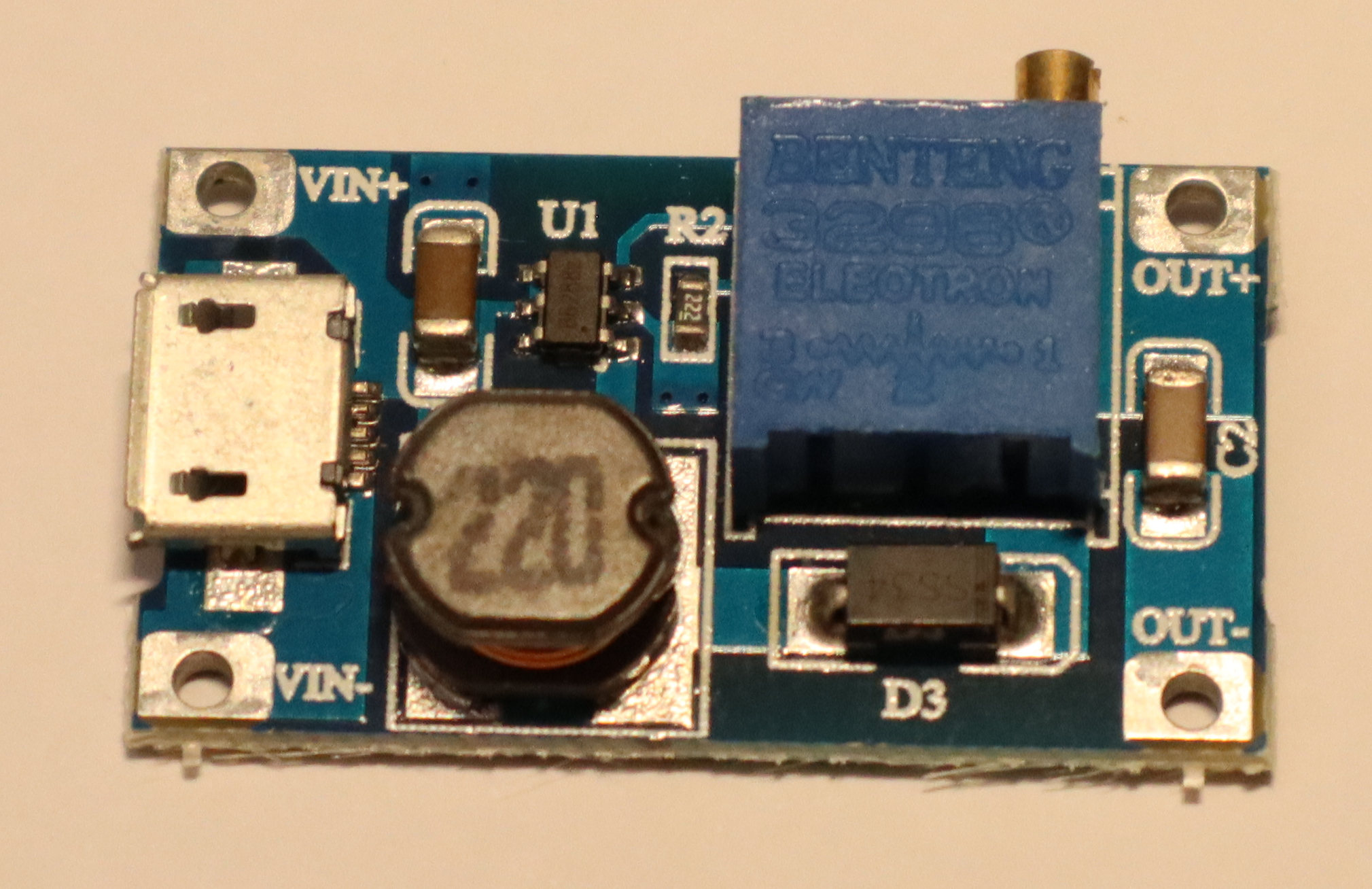Over the past years, I have obtained a variety of buck and boost converters, mostly from AliExpress and ebay. Now that I finally have a way of characterizing them, I am curious about their performance in practice.
Today's specimen is an MT3608-based step up / boost converter from AliExpress. It's sold with a microUSB input, so boosting 5V from USB to 9V or 12V is a likely application. However, given its low quiescent current, it also seems like a good candidate for boosting ~3.7V from a LiIon battery to 5V for USB.
Specs
Advertised ratings vary. The following conservative estimates might be close to reality.
- Input range: 3V .. 24 V
- Output range: 5V .. 28V
- Maximum input current: 0.8 A (1 A?) continuous, 2 A burst.
- Quiescent current: ~100µA
- Maybe: thermal overload protection
- Maybe: internal 4 A over-current limit
The boost modules I have use a multi-turn potentiometer to configure output voltage.
Application
In this setup, I focused on boosting LiIon voltage to 5V for USB output. LiIon voltage typically ranges from 3.0 to 4.2 V -- I went up to 4.5 V just to gather some more data.
Caution
I took reasonable care to calibrate my readings, but will not give any guarantees. The following results might not be close to reality, and might be affected by knock-off chips and sub-par circuit design.
Output Voltage Stability
Both input voltage and output power of a boost converter can vary over time, especially when powered via a LiIon battery. Its output voltage should remain constant in all cases, or only sag a little under load. Most importantly, it should never exceed its idle output voltage – otherwise, connected devices may break.
Up to about 400 mA output current, the converter is well-behaved. Beyond that (i.e., once its input current exceeds 800mA), its output voltage is all over the place – both below and above the set point. With an observed range of 4.5 to 5.7 V, it is also way outside the USB specification, which states that devices must accept 4.5 to 5.2 V.
So, I'd strongly advise against using this chip to power USB devices that may draw more than a few hundred mA.
At 9V and 12V output, I did not notice issues at up to 400 mA, but did not measure anything beyond that. Also, the measurement setup for these two benchmarks was a bit less accurate.
Efficiency
In low-power operation (no more than a few hundred mA), the converter is quite efficient. Beyond that (i.e., in the unstable output voltage area) its efficiency varies as well.
Further Observations
Once input current exceeds 800mA, the devices I have here emit a relatively loud, high-frequency noise.
TL;DR
Exercise caution to avoid frying USB devices.
